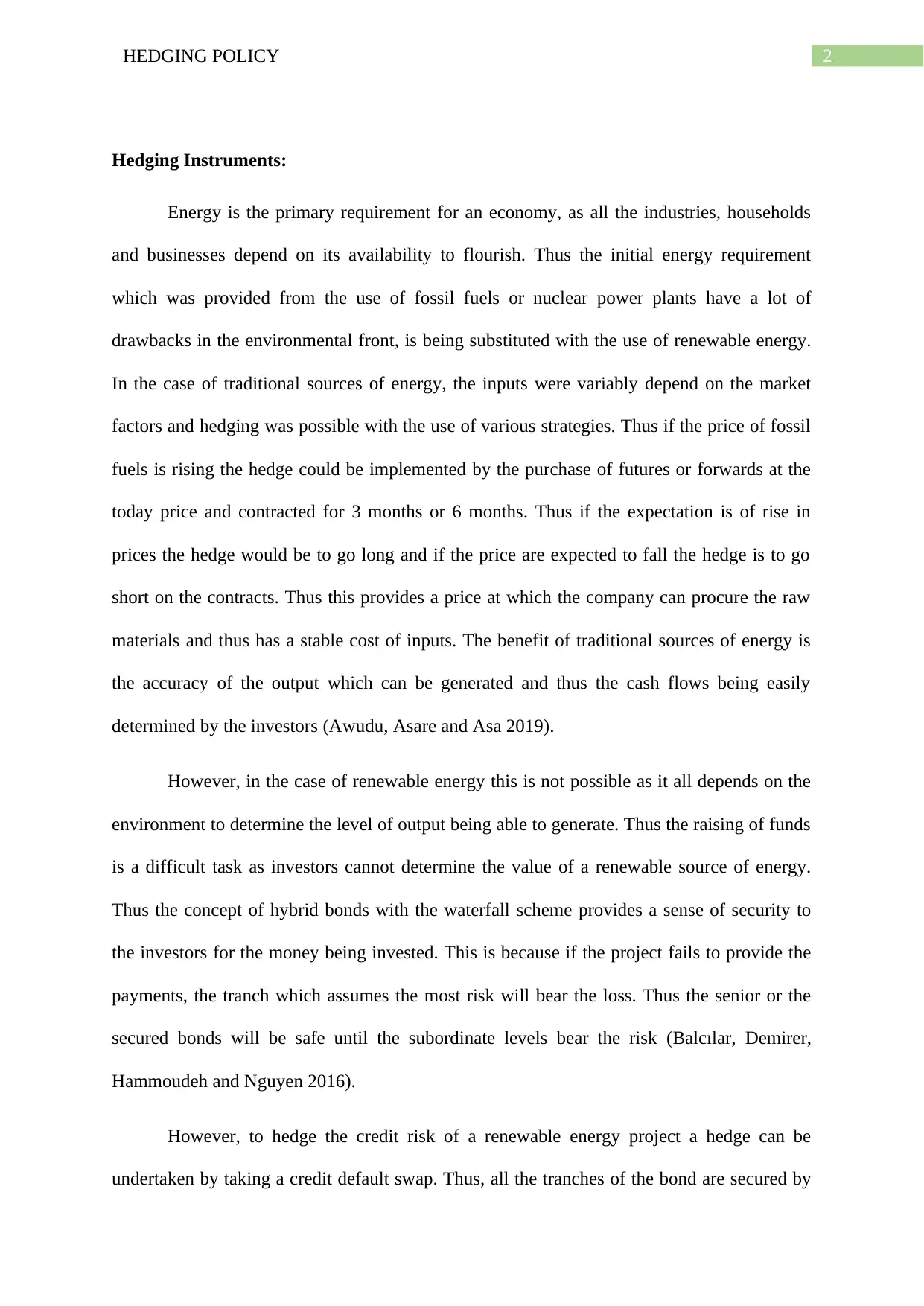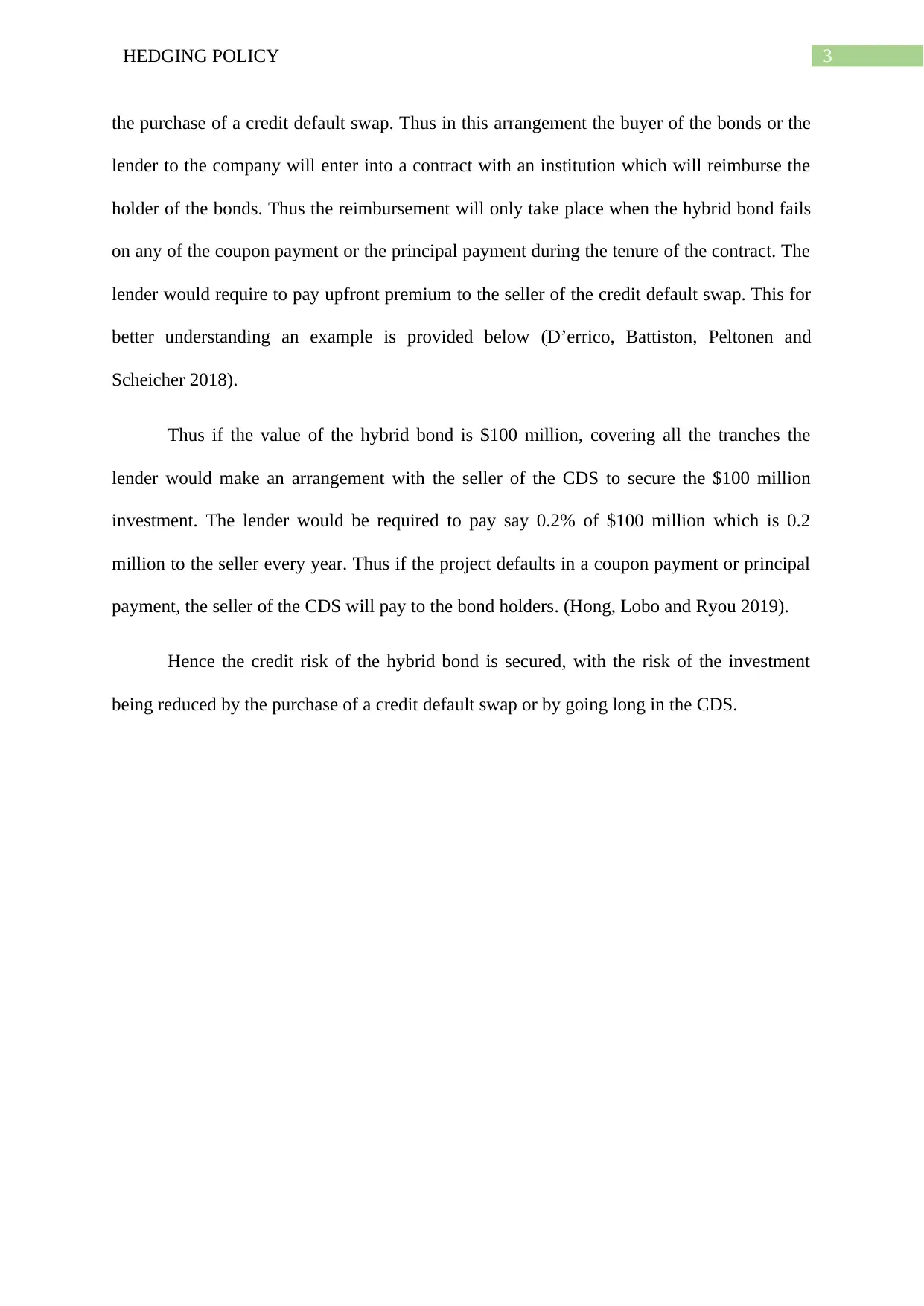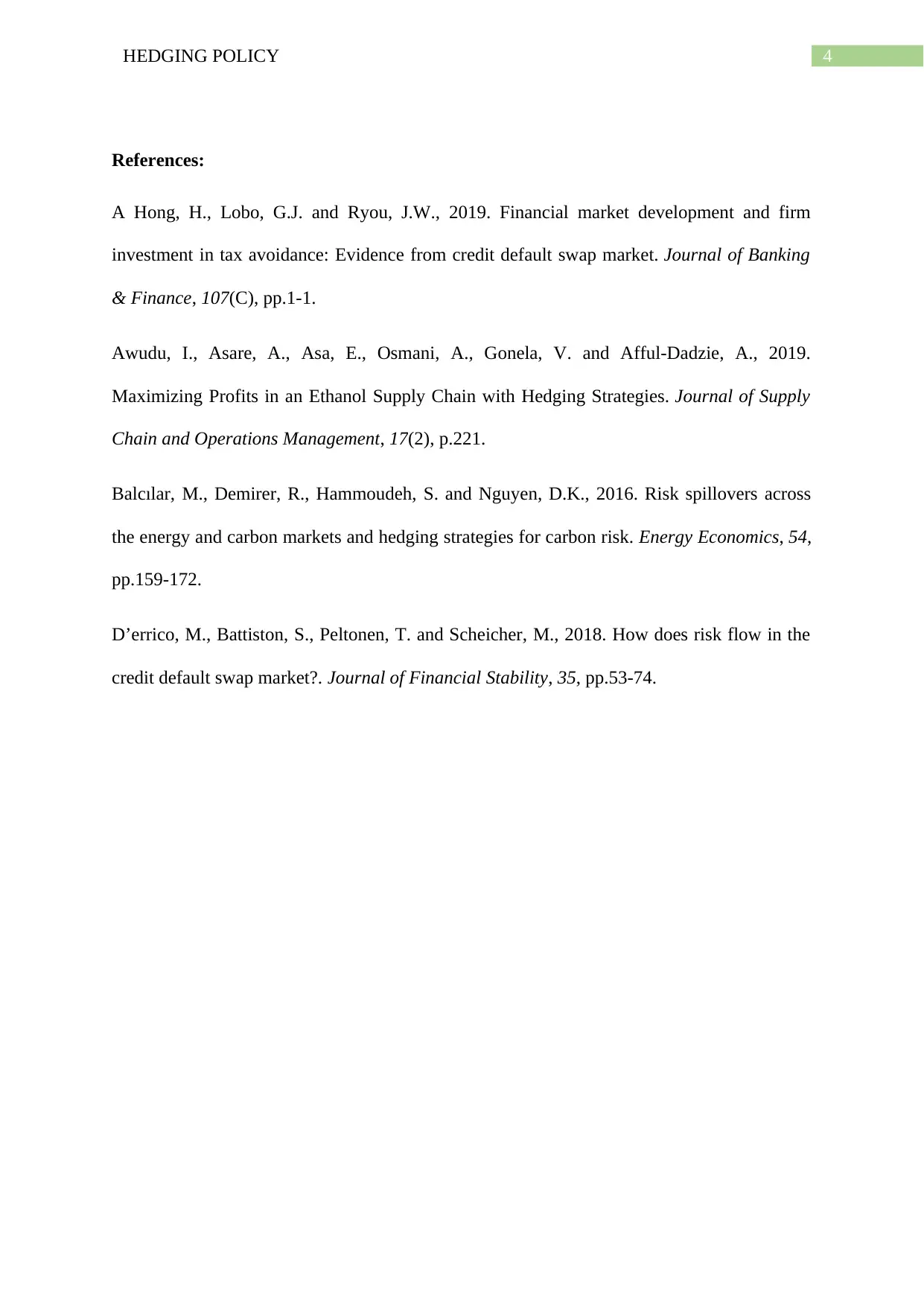Analyzing Hedging Strategies for Renewable Energy Project Financing
VerifiedAdded on 2022/08/20
|5
|841
|16
Report
AI Summary
This report examines hedging policies in the context of renewable energy projects, addressing the challenges associated with financing these initiatives. It highlights the importance of hedging instruments to mitigate various risks, particularly credit risk, which is inherent in renewable energy investments. The report explores the use of hybrid bonds and credit default swaps (CDS) as effective tools for managing risk, providing a detailed example of how a CDS can be employed to secure the investment in a hybrid bond. It explains how these strategies offer financial security to investors by transferring the credit risk to a third party. The analysis emphasizes the benefits of hedging in stabilizing costs and attracting investment in the renewable energy sector. The report references academic research and provides a comprehensive overview of the financial instruments used to manage the risks associated with renewable energy projects.
1 out of 5





![[object Object]](/_next/static/media/star-bottom.7253800d.svg)